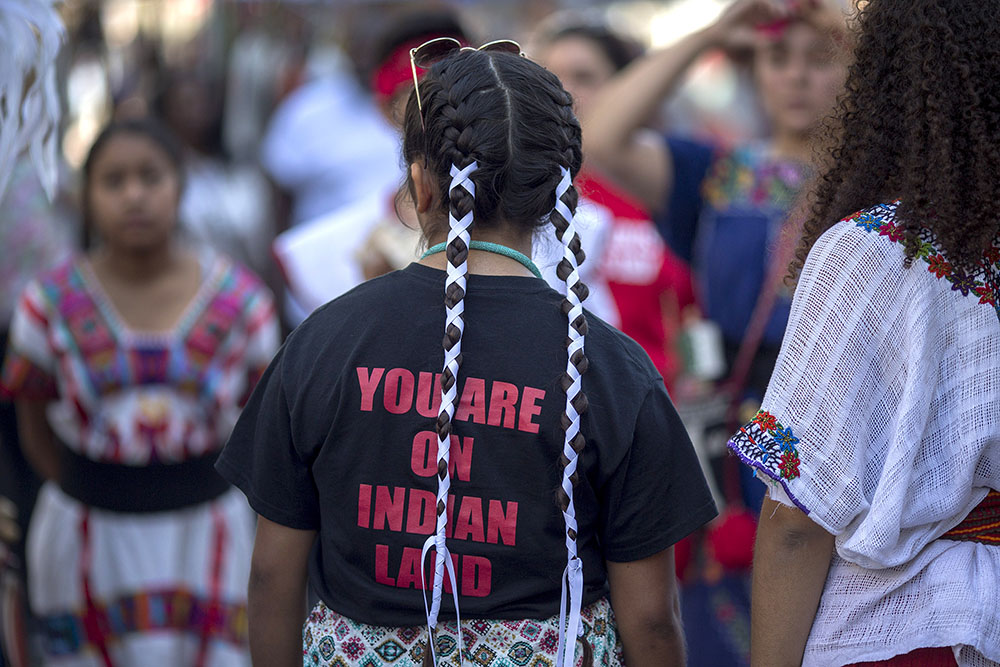In the opening scenes of Rutherford Falls, a Native-inclusive TV series launched in 2021, an Indigenous boy in a tour group is wearing a T-shirt with the words “Land Back” written across the front. This is just one of the many calls for Land Back that seem to be appearing on clothing, bumper stickers, and across social media. But what exactly does Land Back mean?
As Indigenous peoples and nations, we come from the land. The Land is our home and caregiver. But we know we cannot just take from the Land. We are in a reciprocal relationship with the Land and all of the plants, animals, and elements (like water) that occupy it.
Land Stewardship means the literal return of stolen land from settlers to the Indigenous peoples who lost access and control over their original lands.
Some have taken this concept and grown it into an expansive movement, which goes beyond just fighting for the return of Land and reparations (both important). They have folded in much needed advocacy in areas such as climate justice, tribal self-determination, and decolonization. For these individuals, being a steward of the land must include Indigenous peoples taking action to restore our relationships with the Land, because this action is vital to strengthening and ensuring that our cultures, ways of knowing, languages, and ceremonies thrive in the future. From this perspective, having our Land back allows both us and the Land to heal from the traumas of colonialism, because as many of us know healing the land is healing us.
For some, being a steward of the land means taking back stewardship and management of the lands that we once cared for. Today, Indigenous people make up less than 5% of the world’s total population; however, we protect 30% of the Earth’s Land and water and 80% of its biodiversity. Imagine all the good that would result if the 85 million acres that make up the National Parks were returned to Indigenous people to steward.
Beyond stewardship, climate justice is a major topic and by returning our lands, we are protecting our communities from these injustices.
Although we will all have different views about the Land Stewardship, it is clear that being a part of this movement requires action to evoke change. For example, donating to Indigenous-led causes, educating others about Land Stewardship, attending Indigenous-led protests to uphold treaty rights and tribal sovereignty, contacting government officials, and other actions are all steps you can take to join this movement.
Land Stewardship means many different things depending on who you speak with. It holds deep meaning and hope for healing and ensuring the continuity of our communities. It is the culmination of centuries of action taken by our ancestors to return our stolen lands, and it is this generation’s job to continue to tend to the fire for change they started.
To learn more about Land Stewardship, check out these resources:
- NDN Collective’s Land Back Movement
- Stop Line 3
- Standing with Standing Rock
- Yellowhead Institute: What does Land Back mean and how do you enact it?
- For Non-Indigenous Allies: Land Back! What Does It Mean?
- Modern History of the Land Struggle in Canada
- Lakota Law: #LandBack is Climate Justice
- Return the National Parks to Tribes


